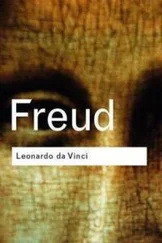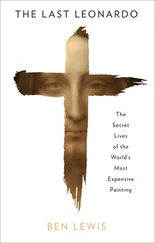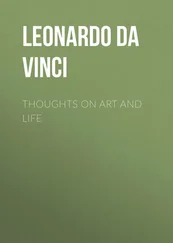Leonardo da Vinci - The Notebooks of Leonardo Da Vinci. Complete
Здесь есть возможность читать онлайн «Leonardo da Vinci - The Notebooks of Leonardo Da Vinci. Complete» — ознакомительный отрывок электронной книги совершенно бесплатно, а после прочтения отрывка купить полную версию. В некоторых случаях можно слушать аудио, скачать через торрент в формате fb2 и присутствует краткое содержание. Жанр: foreign_prose, foreign_home, visual_arts, foreign_antique, на английском языке. Описание произведения, (предисловие) а так же отзывы посетителей доступны на портале библиотеки ЛибКат.
- Название:The Notebooks of Leonardo Da Vinci. Complete
- Автор:
- Жанр:
- Год:неизвестен
- ISBN:нет данных
- Рейтинг книги:3 / 5. Голосов: 1
-
Избранное:Добавить в избранное
- Отзывы:
-
Ваша оценка:
- 60
- 1
- 2
- 3
- 4
- 5
The Notebooks of Leonardo Da Vinci. Complete: краткое содержание, описание и аннотация
Предлагаем к чтению аннотацию, описание, краткое содержание или предисловие (зависит от того, что написал сам автор книги «The Notebooks of Leonardo Da Vinci. Complete»). Если вы не нашли необходимую информацию о книге — напишите в комментариях, мы постараемся отыскать её.
The Notebooks of Leonardo Da Vinci. Complete — читать онлайн ознакомительный отрывок
Ниже представлен текст книги, разбитый по страницам. Система сохранения места последней прочитанной страницы, позволяет с удобством читать онлайн бесплатно книгу «The Notebooks of Leonardo Da Vinci. Complete», без необходимости каждый раз заново искать на чём Вы остановились. Поставьте закладку, и сможете в любой момент перейти на страницу, на которой закончили чтение.
Интервал:
Закладка:
142
Why the 2 lights one on each side of a body having two pyramidal sides of an obtuse apex leave it devoid of shadow.
[Footnote: The sketch illustrating this is on Plate XLI No 1.]
143
A body in shadow situated between the light and the eye can never display its illuminated portion unless the eye can see the whole of the primary light.
[Footnote: A stands for corpo (body), B for lume (light).]
144
The eye which looks (at a spot) half way between the shadow and the light which surrounds the body in shadow will see that the deepest shadows on that body will meet the eye at equal angles, that is at the same angle as that of sight.
[Footnote: In both these diagrams A stands for lume (light) B for ombra (shadow).]
145
OF THE DIFFERENT LIGHT AND SHADE IN VARIOUS ASPECTS AND OF OBJECTS PLACED IN THEM.
If the sun is in the East and you look towards the West you will see every thing in full light and totally without shadow because you see them from the same side as the sun: and if you look towards the South or North you will see all objects in light and shade, because you see both the side towards the sun and the side away from it; and if you look towards the coming of the sun all objects will show you their shaded side, because on that side the sun cannot fall upon them.
The law of the incidence of light.
146
The edges of a window which are illuminated by 2 lights of equal degrees of brightness will not reflect light of equal brightness into the chamber within.
If b is a candle and a c our hemisphere both will illuminate the edges of the window m n , but light b will only illuminate f g and the hemisphere a will light all of d e .
147
OF PAINTING.
That part of a body which receives the luminous rays at equal angles will be in a higher light than any other part of it.
And the part which the luminous rays strike between less equal angles will be less strongly illuminated.
SECOND BOOK ON LIGHT AND SHADE
Gradations of strength in the shadows (148. 149).
148
THAT PORTION OF A BODY IN LIGHT AND SHADE WILL BE LEAST LUMINOUS WHICH IS SEEN UNDER THE LEAST AMOUNT OF LIGHT.
That part of the object which is marked m is in the highest light because it faces the window a d by the line a f ; n is in the second grade because the light b d strikes it by the line b e ; o is in the third grade, as the light falls on it from c d by the line c h ; p is the lowest light but one as c d falls on it by the line d v ; q is the deepest shadow for no light falls on it from any part of the window.
In proportion as c d goes into a d so will n r s be darker than m , and all the rest is space without shadow.
[Footnote: The diagram belonging to this chapter is No. 1 on Plate III. The letters a b e d and r are not reproduced in facsimile of the original, but have been replaced by ordinary type in the margin. 5-12. The original text of these lines is reproduced within the diagram.—Compare No 275.]
149
The light which falls on a shaded body at the acutest angle receives the highest light, and the darkest portion is that which receives it at an obtuse angle and both the light and the shadow form pyramids. The angle c receives the highest grade of light because it is directly in front of the window a b and the whole horizon of the sky m x . The angle a differs but little from c because the angles which divide it are not so unequal as those below, and only that portion of the horizon is intercepted which lies between y and x . Although it gains as much on the other side its line is nevertheless not very strong because one angle is smaller than its fellow. The angles e i will have less light because they do not see much of the light m s and the light v x and their angles are very unequal. Yhe angle k and the angle f are each placed between very unequal angles and therefore have but little light, because at k it has only the light p t , and at f only t q ; o g is the lowest grade of light because this part has no light at all from the sky; and thence come the lines which will reconstruct a pyramid that is the counterpart of the pyramid c ; and this pyramid l is in the first grade of shadow; for this too is placed between equal angles directly opposite to each other on either side of a straight line which passes through the centre of the body and goes to the centre of the light. The several luminous images cast within the frame of the window at the points a and b make a light which surrounds the derived shadow cast by the solid body at the points 4 and 6. The shaded images increase from o g and end at 7 and 8.
[Footnote: The diagram belonging to this chapter is No. 2 on Plate III. In the original it is placed between lines 3 and 4, and in the reproduction these are shown in part. The semi circle above is marked orizonte (horizon). The number 6 at the left hand side, outside the facsimile, is in the place of a figure which has become indistinct in the original.]
On the intensity of shadows as dependent on the distance from the light (150-152).
150
The smaller the light that falls upon an object the more shadow it will display. And the light will illuminate a smaller portion of the object in proportion as it is nearer to it; and conversely, a larger extent of it in proportion as it is farther off.
A light which is smaller than the object on which it falls will light up a smaller extent of it in proportion as it is nearer to it, and the converse, as it is farther from it. But when the light is larger than the object illuminated it will light a larger extent of the object in proportion as it is nearer and the converse when they are farther apart.
151
That portion of an illuminated object which is nearest to the source of light will be the most strongly illuminated.
152
That portion of the primary shadow will be least dark which is farthest from the edges.
The derived shadow will be darker than the primary shadow where it is contiguous with it.
On the proportion of light and shade (153-157).
153
That portion of an opaque body will be more in shade or more in light, which is nearer to the dark body, by which it is shaded, or to the light that illuminates it.
Objects seen in light and shade show in greater relief than those which are wholly in light or in shadow.
154
OF PERSPECTIVE.
The shaded and illuminated sides of opaque objects will display the same proportion of light and darkness as their objects [Footnote 6: The meaning of obbietti (objects) is explained in no 153, lines 1-4.—Between the title-line and the next there is, in the original, a small diagram representing a circle described round a square.].
155
OF PAINTING.
The outlines and form of any part of a body in light and shade are indistinct in the shadows and in the high lights; but in the portions between the light and the shadows they are highly conspicuous.
Читать дальшеИнтервал:
Закладка:
Похожие книги на «The Notebooks of Leonardo Da Vinci. Complete»
Представляем Вашему вниманию похожие книги на «The Notebooks of Leonardo Da Vinci. Complete» списком для выбора. Мы отобрали схожую по названию и смыслу литературу в надежде предоставить читателям больше вариантов отыскать новые, интересные, ещё непрочитанные произведения.
Обсуждение, отзывы о книге «The Notebooks of Leonardo Da Vinci. Complete» и просто собственные мнения читателей. Оставьте ваши комментарии, напишите, что Вы думаете о произведении, его смысле или главных героях. Укажите что конкретно понравилось, а что нет, и почему Вы так считаете.












